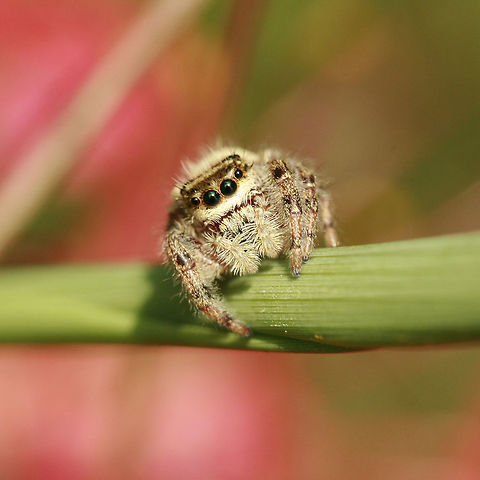
Appearance
Jumping spiders have a distinctive rectangular carapace, and that of female "Phidippus clarus" average 4.05 millimetres wide, while the carapaces of males average 3.20 millimetres.They are typically a red/brown coloration, but can sometimes be a lighter yellow or brown with darker markings on their bodies.
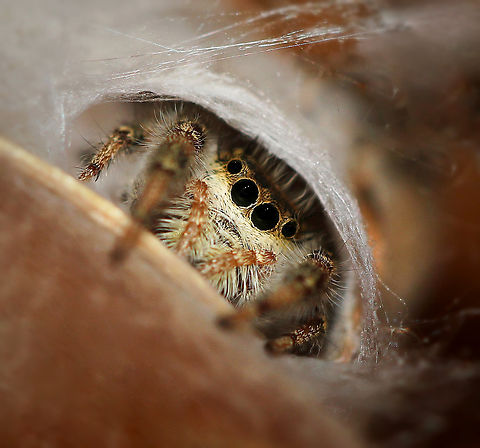
Naming
The spider is one of 60 species in the genus "Phidippus", and one of about 5,000 in the Salticidae, a family that accounts for about 10% of all spider species. "P. clarus" is a predator, mostly consuming insects, other spiders, and other terrestrial arthropods.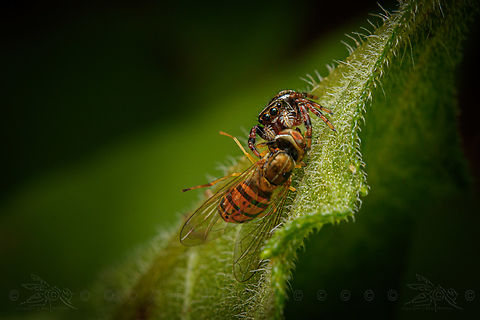
Distribution
"Phidippus clarus" is found in old fields throughout most of the United States and southern Canada. It has also been recorded from western Mexico. It lives among flowers, often sharing habitats with the small to medium-sized crab spider "Misumena vatia", which waits for prey.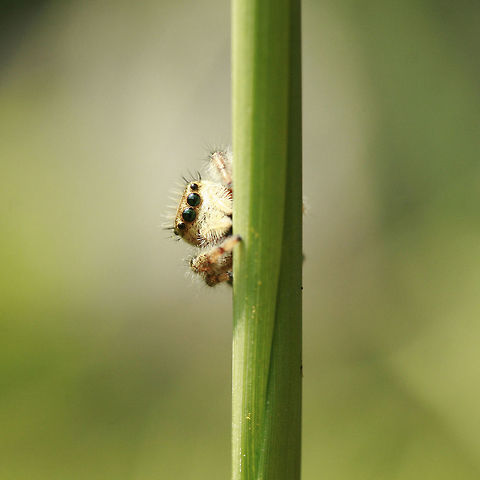
Habitat
"Phidippus clarus" is found in old fields throughout most of the United States and southern Canada. It has also been recorded from western Mexico. It lives among flowers, often sharing habitats with the small to medium-sized crab spider "Misumena vatia", which waits for prey. "P. clarus" often waits upside down near the top of a plant such as basil leaves, a position which may be useful for detecting prey and then quickly jumping down before the prey can escape. In a 2002 survey of jumping spiders in Minnesota, "P. clarus" accounted for 52% of the total found.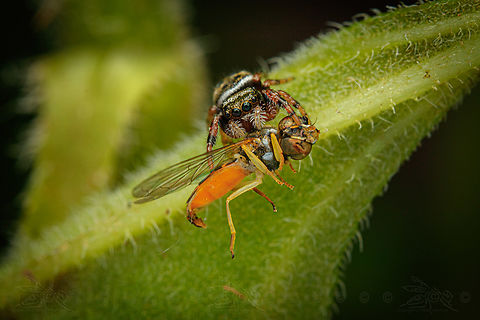
Reproduction
When "P. clarus" males compete for females, the winners are those that produce the most vibrations on the surface and those that are largest. Contests between females involve less displaying, and physical fights between females are more likely to end in injury or death. The most successful males choose the largest females, as these females produce the most eggs and are the quickest at producing. If a female that has mated already finds another larger male, she will often mate again with the larger male. The average clutch is 135 eggs. Unlike most of the genus "Phidippus", "P. clarus" females die after one brood has left the nest."Phidippus clarus" becomes adult in early summer, and females about to lay eggs can weigh 400 milligrams. Early in the breeding season, in early to mid-July, there are more males than females. The females all become sexually mature at the same time. At this point of the breeding season males die off, so that the number of males becomes equal to or slightly smaller than the number of females. By August, most females live in their nests overnight for increasing periods, as this is where they will lay eggs. The nests are located in rolled up leaves and are made of thick silk, which is expensive to build. The egg sacs are conspicuous, as they are made of such thick silk. Tests show that females use visual landmarks to return to their nests. A male only remains at the same nest when paired with a female.
Like other spiders and many other arthropods, "P. clarus" can vibrate surfaces to interact with others of its species, sometimes in conjunction with other communications such as movements, to intimidate rivals and woo mates.

Food
Almost all jumping spiders are predators, mostly preying on insects, other spiders, and other non-aquatic arthropods. The most common procedure is sighting the prey, stalking, fastening a silk safety line to the surface, using the two pairs of back legs to jump on the victim, and finally biting the prey. Most jumping spiders walk throughout the day, so that they maximize their chances of a catch.After capturing the prey, "P. clarus" settles in one spot and does not move again until it has discarded the undigestible hard remains of the prey. If "P. clarus" has gone without food for a few days, it eats slowly.
"P. clarus", which is large by the standards of salticids, takes prey up to the size of an adult earwig. In an experiment, when jumping spider were offered as many fruit flies as they could eat within a 4-hour sessions, specimens took 17 flies on average—while one took 41. When the courtship display of wolf spider "Schizocosa ocreata" combines visual signals with vibrations, "P. clarus" responds to its wolf spider prey more quickly than when the wolf spider presents only one of the types of signal.
Defense
"P. clarus" is parasitized by the Californian wasp "Aporinellus completus" and by mermithid nematodes. In an experiment in 2006, "P. clarus" showed promise for controlling the fourlined plant bug, "Poecilocapsus lineatus", which severely damages the commercially grown sweet basil.References:
Some text fragments are auto parsed from Wikipedia.